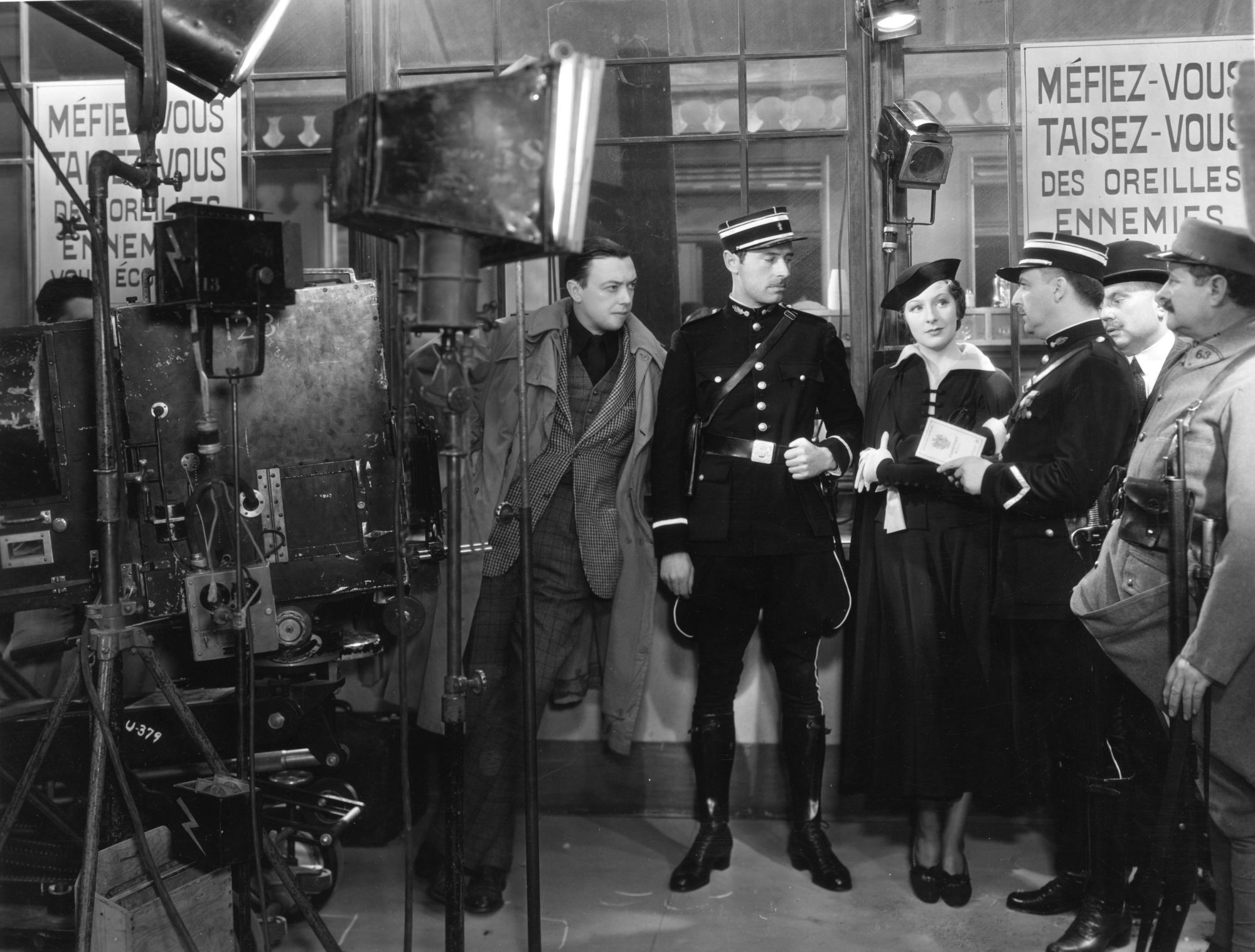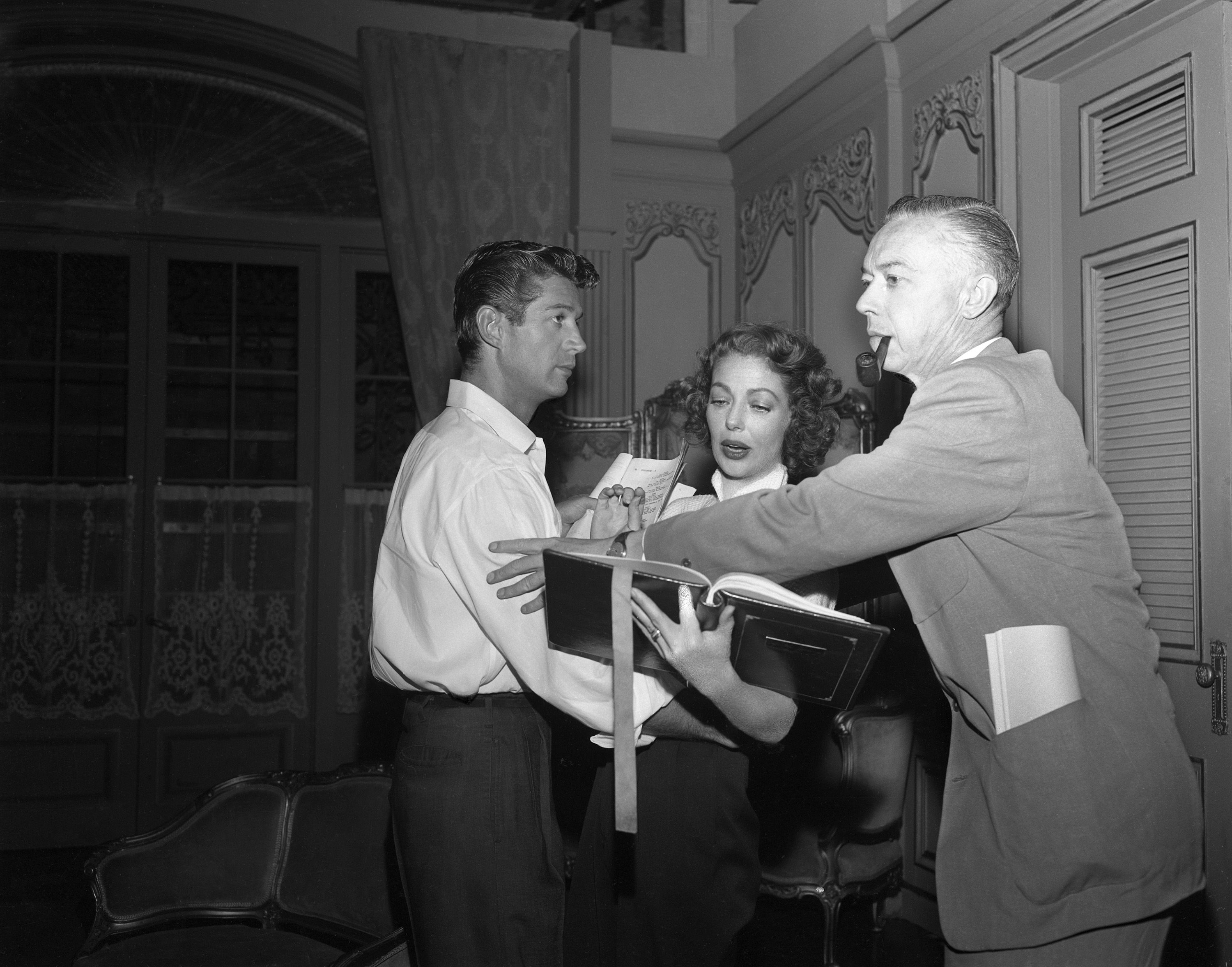
- Film
Filmmakers’ Autobiographies: Robert Florey
Today, his name is mostly forgotten, except maybe by a handful of hardcore cinephiles. But Robert Florey (1900-1979) was a prolific director who, in a career that started in 1927, counted more than fifty pictures to his credit, mostly B-movies that earned him a solid reputation within the Studio System. In 1929, he directed the Marx Brothers in the demented musical comedy The Cocoanuts, Johnny Weissmuller in Tarzan and the Mermaids, John Garfield in Dangerously They Live, and several fast-paced lower budget films with evocative titles like Don’t Bet on Blondes, Gangster Lady, God is my Co-Pilot… In 1937 he gave Anthony Quinn his first part in Daughter of Shanghai. In the mid-fifties, he turned to television where he was equally active at the helm of many episodes of popular series like The Alfred Hitchcock Hour, The Twilight Zone or The Outer Limits, before retiring in 1964.
French-born Robert Florey’s initiation to cinema was as an assistant to Louis Feuillade (Judex and Fantomas) at the Gaumont studios in Nice. Fascinated by Hollywood, he moved here in 1921 as a correspondent for Parisian based Cinemagazine, a new weekly publication for which he was assigned to write a regular column titled Filmland., reporting on all aspects of the booming movie business. In 1926, he published Deux Ans dans les studios américains, his first book, never translated in English. A collection of some of his articles that appeared between 1922 and 1923. It is a lively and often amusing collection of vignettes briskly told about the effervescent world he was suddenly immersed in that offers a unique perspective on the Hollywood of that period. Obviously welcomed with open arms by the community, he would often get unprecedented access.
Florey was a busy man, covering the non-stop activities of the dream factory of the still silent era, commenting on the fast growth of the city, with new buildings emerging constantly, the ever-expanding studios. With contagious enthusiasm, he recounts his meetings with all the filmmakers and stars, or “étoiles” as he calls them, but also characters actors, moguls…the list is long.
Here he is, one day watching with astonishment as seven thousand extras are corralled by Allan Dwan on the set of Robin Hood. Marveling at the sight and size of the gigantic medieval decor, complete with a full-scale castle, of this super-production whose star is Douglas Fairbanks. He would become fast friends with the then reigning King of Hollywood who would soon hire him to handle his European publicity. And he is a regular guest at Pickfair, the mansion Fairbanks bought for his wife Mary Pickford and where the couple entertained lavishly. He often visits them on their respective sets, providing priceless insights on the way those superstars operated. One morning finds him driving all the way to the remote Chatsworth Lake where the studio had built an entire fishermen’s village to accommodate the exterior filming of Tess of the Storm Country, starring Mrs. Fairbanks.
And Florey is at the Pasadena train station on December 23rd, 1922, to welcome Ernst Lubitsch who has been invited by Mary Pickford to direct her next picture, Rosita. He can’t help asking him how long he intends to stay in America. The response: “I hope to be able to work here as long as possible.” Indeed he would never go back to Europe.
At home with Rudolph Valentino, he is amused that his two German shepherds Sheik and Marquis only respond to commands in Italian from their master. On a visit to Mack Sennett’s studios in Edendale, in what is today the Echo Park area, he is ecstatic to finally see in the flesh a dozen of the famed Bathing Beauties playfully frolicking in a large swimming pool. Another day, he is introduced to another star of the Sennett Productions: Pepper the cat that has appeared in hundreds of movies and has his own stunt double because the feline hates doing acrobatics! He is moved to see the very dressing-room where Charlie Chaplin got made up for his very first film in 1914…

In 1953, directing George Nader and Loretta Young for The Loretta Young Show.
nbc archives/getty images
And he sees Chaplin at work on several occasions, resulting in a rather frank portrait written with no filters: “He is the most anxious and easily irascible director I know. If something doesn’t go his way, he starts to sulk and goes lock himself in his office. Time doesn’t exist for him. I have seen him while directing a scene takes a cigarette from his pocket put it to his lips for five seconds and suddenly needing to speak throwing it on the ground, only to repeat the exact same gesture thirty times in a row.”
Another day finds Florey having exclusive access (badge mandatory) to the set of Cecil B. deMille’s Manslaughter as he directs the infamous roman orgy sequence full of half-naked extras cavorting in front of the camera. There is a most memorable evening spent in the company of his fellow countryman Max Linder at his sumptuous mansion. But he finds the “Roi du rire” quite sad, in the same state he has seen his close friend Charlie Chaplin a few days before. Asked why the melancholy mood, Linder confesses to not feeling funny anymore and struggling more and more to cope with the pressure to live up to his reputation. “Every morning I force myself to be happy and gay: I sing my heads off, I whistle, and still I feel infinitely sad.”At some point later in the evening, the maitre d’hôtel comes in bringing a tray of cookies, puff cream cakes, chocolates and candies, the only food Linder confesses to eating. “Because for me meat and vegetables feel like prescription drugs.” Sitting on the patio overlooking the city, they reminisce about Paris and moviemaking…Back in France, Linder would commit suicide in 1925.
More upbeat is Lon Chaney, “the man of a thousand faces” whom he meets at the studio one early morning and who gladly shows him his famous make-up kit case and demonstrates how he can transform himself in a few minutes in an old Chinese man, complete with yellow foundation, fake porcelain teeth and a bit of fabric glued around the eyes to give the appropriate squinty look. Florey was also particularly interested in the numerous extras that populated the studios. Their struggle, their hope for fame, the often desperate quest to simply survive and the way they were treated, all elements that provided him for the idea for an experimental film he co-directed in with Slavko Vorkapich, the visionary Life and Death of 9413: A Hollywood Extra. A hallucinatory exploration of the cruelty in Hollywood, long before Horace McCoy explored similar themes in I Should Have Stayed Home and Nathanael West in The Day of the Locust ….
As he concludes his book, he wonders what the future will bring to Hollywood.
After noticing that for the time being, most filmmakers and studios seem to have given up on the talking pictures- in 1926 when he writes- he feels optimistic and predicts that “the cinematographic activity in the United States will continue to be brilliant for a long time to come.” Not knowing then how much he would contribute to it in his own way.

